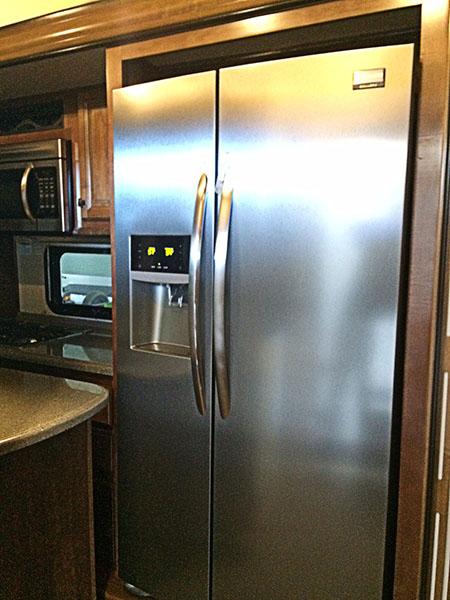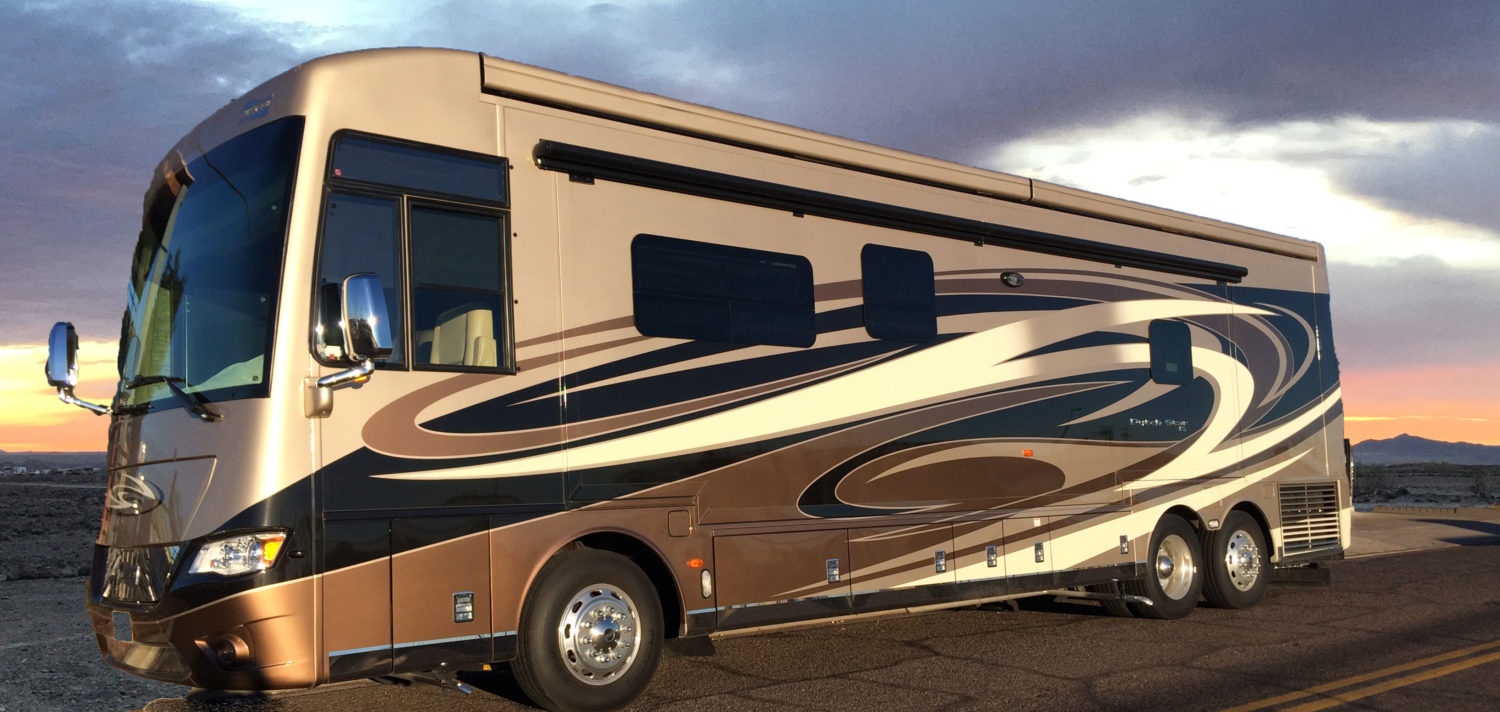Many potential Precision RV customers have residential refrigerators in their RVs. These new RV’s boast a lot of great features, making the RV’ing experience feel even more like home. The residential refrigerators add to that experience. Spacious, and just plain large, what’s coming in today’s larger RV’s rivals what you’d put in your home. But, how much power do these take compared to the standard 2 or 3 way refrigerator? More and less in different ways.
RV Refrigerators – AC, DC, Propane
For many years, RV’s came equipped with refrigerators that could run on AC (shore power), propane, and plain DC only power for some smaller ones (your battery plant only). While not as large as your standard residential refrigerators, the mix of how these function is important. While on shore power at an RV park, your refrigerator could run from the supplied AC power. When not at a park using shore power these refrigerators can switch over to using propane.
For the propane setups, very little power is required. So “dry camping” or “boondocking” while running the refrigerator, is possible. Of course, the selection of RV refrigerators hasn’t been as broad as standard residential units. Some RV’ers wanted more. Manufacturers started getting the idea that residential units might be of interest to RV’ers.
How do residential refrigerators work in your RV?
They work really well while in a park using shore power. They are very energy efficient and well insulated. Residential refrigerators normally offer more space for less money. They offer features that you just can’t find in RV-specific units. However, they use more power overall if you are dry camping than propane alone would due to the need to make AC power from DC batteries. If you plan on doing any dry camping at all, you will quickly learn that keeping your food cool is going to take some extra juice.
These units use AC power ONLY. While plugged in at a park, you have all the AC power you want. But, when traveling down the road or camping somewhere without shore power, how do you supply power to the fridge? Very good question. Your RV has a DC power plant (your battery plant). That DC power needs to be converted to AC to run the residential fridge. That takes an inverter.

A big fridge in your RV is an amazing convenience, but if you don’t plan your power system appropriately it can become a problem.
Creating AC power for your fridge
Any RV with a residential will need an inverter. The inverter converts DC power from the batteries to AC power. What customers often don’t think of is that the inverter itself uses power to run while creating that AC power. With a residential fridge it means that the inverter has to be on MOST OF THE TIME. This is in addition to the power the refrigerator needs to run while you’re not hooked up. So, you’re going to need a fair amount of battery power to run both the inverter and the fridge when you’re unhooked. Dry camping requires a larger battery plant, an inverter to run the unit, and a way to generate more power to refill your batteries over time. Bottom line? Residential refrigerators require more battery power, an inverter, and a larger solar array if you do not want to run a generator all the time to add power to the system.
A more detailed look
Let’s look at this more closely. We’ve already determined that residential refrigerators use more power when not on shore power. But, that is not the whole story. For example, while on an inverter with a 2 way fridge:
- The standard 2 door absorption RV fridge uses around 3 AC amps/hour (30 DC amps)
- The larger 4 door RV fridge uses double that – around 6 AC amps/hour (60 DC amps)
Now that is a lot of AC. RV refrigerators on AC are not energy efficient. But, when dry camping, they just switch to LP mode and life is great!
Now, consider the residential refrigerator. It only uses AC. Most of the newer ones with the bottom freezers use around 1 AC amp/hour. This is great. That is a lot less than 6 amps for the larger standard RV refrigerator. That’s about 10 DC amps when the compressor is running. But the other catch, is that these refrigerators have an auto-defrost cycle that uses a lot of power when it runs and usually cannot be turned off. Most have an automatic ice maker as well.
The biggest catch is that the INVERTER needs to be on most of the time which uses battery power. Inverters are not free, they will cost additional battery power. When the inverter is on, it consumes battery power just to run itself and most RVers have other items plugged into outlets (TVs, microwave, laptops, satellite TV etc.) if it is a whole house inverter. Even in standby mode these items consume power. In short, a residential fridge is much more energy efficient than an RV fridge on AC, but because the inverter is on more, you will consume more overall battery power in a given day. In my experience, it averages 100 -150 amp hours a day or more. I usually recommend 600 watts of solar on the roof just for the refrigerator. From there, you give more consideration to the other appliances you’re powering, and plan accordingly.
Designing your solar power for your actual use
At Precision RV, we build custom RV Solar Power plants for what you’re doing, your lifestyle. We learn about the power use in your RV, and design a system to meet all of your power requirements. Do you use the microwave, TV, computers, air conditioner, and other devices? We work with you to lay out a system that covers all of your power draws and make sure that you’ll have power when you need it. That includes planning for a residential refrigerator as well.
With today’s power demands for RV’ing, Lithium Ion systems are becoming a better solution. And Precision RV specializes in Lithium Ion RV Battery solutions. Contact us today to start planning your RV power system!


You must be logged in to post a comment.